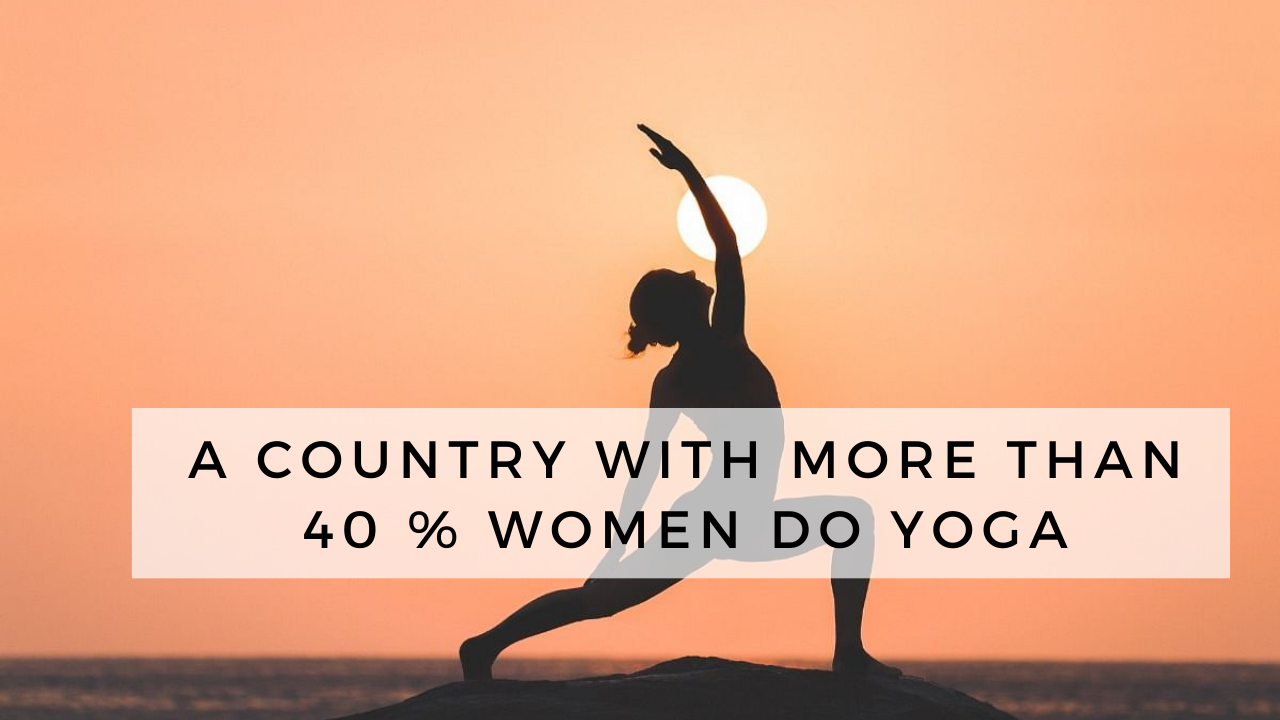In a recent study conducted by the International Yoga Federation, fascinating insights have emerged regarding the global practice of yoga. The study examined the percentage of the population, both male and female, engaged in yoga across several countries. The results not only shed light on the widespread adoption of this ancient practice but also revealed intriguing gender disparities in various nations.
The study found that a considerable percentage of the population in many countries actively incorporates yoga into their daily lives. Topping the list for male practitioners is India, with an impressive 22% of men embracing yoga as part of their wellness routine. The United States follows closely behind at 12%, while the United Kingdom boasts a respectable 9%. South Korea and Spain both show a strong male presence in yoga, with 7% of their male population actively participating. Germany and France follow suit, with 6% and 5% respectively, while China demonstrates a slightly lower rate at 4%.
Interestingly, when it comes to female practitioners, South Korea emerges as the leader with a staggering 43% of women actively engaging in yoga. India, known as the birthplace of yoga, ranks second with 31% of women practicing this ancient discipline. Spain and the UK trail closely behind, each with 31% and 30% respectively. The study also found a significant number of female practitioners in the United States, where 27% of women regularly practice yoga. China, Germany, and France demonstrate substantial female involvement, with rates ranging from 26% to 21%.
These statistics not only highlight the growing popularity of yoga worldwide but also emphasize the gender dynamics surrounding its practice. While yoga is traditionally associated with female practitioners, it is intriguing to observe a higher percentage of women participating in countries like South Korea and India. This indicates a shift in societal perceptions and an increasing recognition of the physical and mental benefits that yoga offers to women.
The study's findings also underscore the diverse cultural adoption of yoga across the globe. Despite yoga's roots in ancient Indian philosophy, it has found a firm foothold in countries like the United States, the United Kingdom, and Spain. This widespread embrace of yoga is a testament to its universal appeal and its ability to transcend cultural boundaries.
As the benefits of yoga continue to be recognized and celebrated, these statistics serve as a reminder of the practice's transformative power. From promoting physical well-being to enhancing mental clarity and inner peace, yoga has proven to be a versatile and accessible practice for people of all backgrounds.
The study's results provide valuable insights into the global yoga landscape and offer a glimpse into the evolving relationship between individuals and this ancient discipline. With its numerous physical and mental health benefits, it is no surprise that yoga continues to gain traction across the world, inspiring millions to embark on their own personal journey toward wellness and self-discovery.










